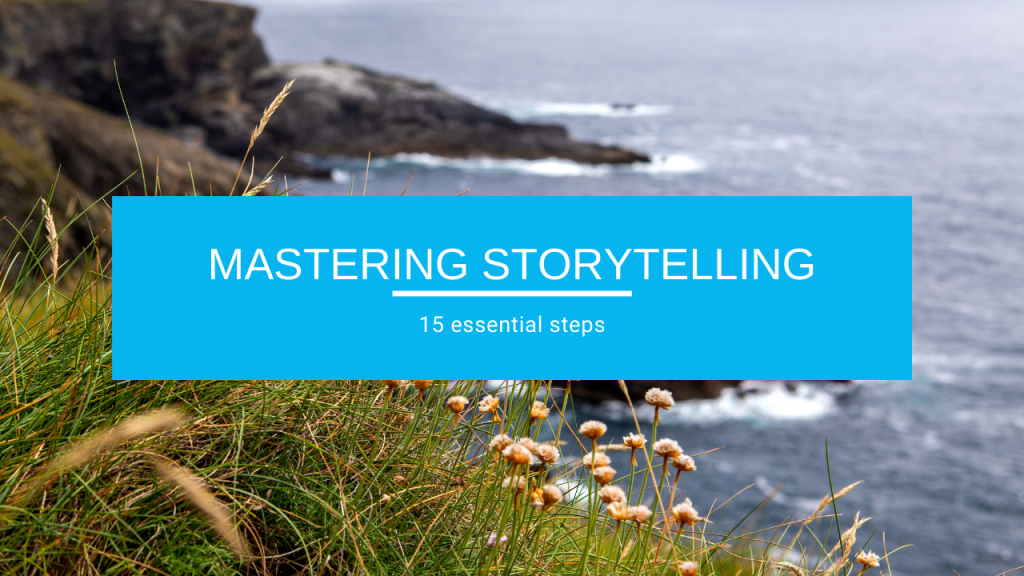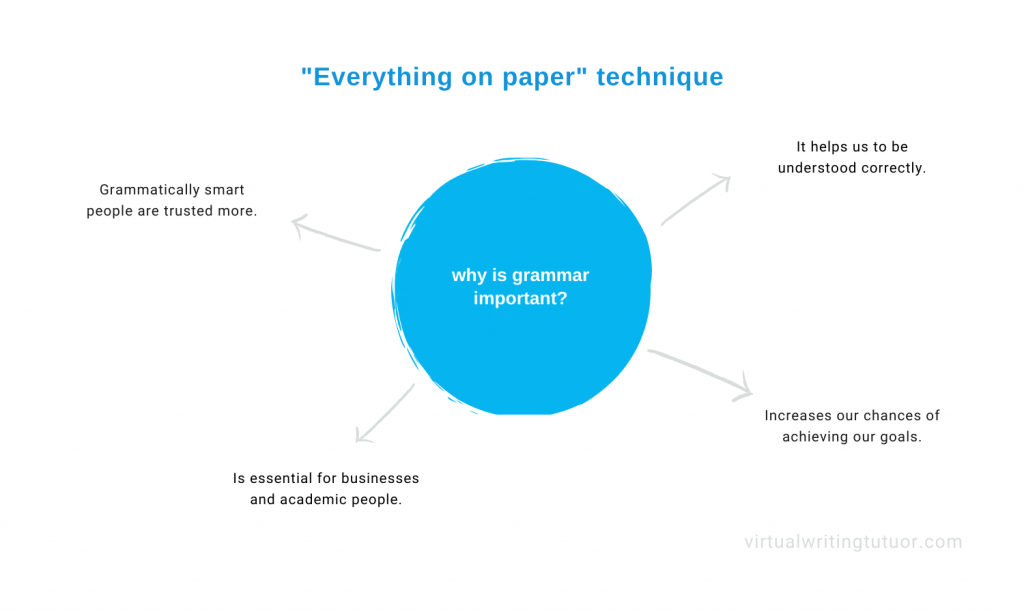Everybody is a storyteller. And to be one requires almost nothing. You can start your storytelling journey right here.
If you’re a human being who wants to make the best of their work, this guide is for you. Hope you enjoy it and take some good ideas for yourself.
The Groundwork
Will it be easy? No. Is it worth it? Yes. However, there is no story without writing and trying. And if you thought you’d improvise, think again.
The most important part of storytelling is writing the story. How are you going to tell it if you’re not prepared? That’s almost impossible. Unless you are a storytelling master. If so, why are you even here?
Oh, you’re still here? Awesome. Let’s start then.
Pick A Name
Well, not a pet name, but your story topic. To do so, use the “everything on paper” technique. For example, if you’re a teacher, write down the subject of your class. However if you’re not, choose the topic that’s relevant for you.
As an example, a class topic could be “why is grammar important”. What you should do now is write down the ideas that come into your head.
Maybe you remember some real-life examples. Or some historical events prove the point of the topic. And instead of putting pressure on yourself, try brainstorming some ideas. In case you didn’t already know, you can get a grammar check with the VWT.
Funny, Educational, or Life-Changing?
Depending on your audience, the narrative changes. Think about the people, are they always positive, serious, or conservative? Based on your experience with them, choose the tone of your story.
Comedy narrative is easy to make up. It works for a warm-up before a serious subject. Yet, educational stories give the right mood for learning. So, choose the tone wisely.
Draft You Way Up To The Story
Now that you have everything figured out, write your story. Don’t worry about writer’s block, everyone experiences it. To make it easy, follow the guide on how to write a story.
No one gets it right from the start. So don’t be afraid, write everything that comes to mind. As you write more, you’ll realize that there is a thing called editing. In other words, the draft part is for the ideas, not for the masterpiece.
A quick tip: Use online google docs to never lose your progress.
Mastering Storytelling
To master a skill you should practice. Practicing requires following some basic steps or guidelines, so here is the one for mastering storytelling.
Why Is Your Story Important?
A good story grabs your attention. A great story explains why it’s important for to listen to it. Because every story has a goal. And you only need one single idea that teaches something or, makes the story humorous.
You could say “You’ll never guess what happened the other day.” or ask a “crazy” question like “Why do cats always fall on their feet?”.
Then continue with your story.
For now, you have their attention. But remember to choose the hook properly. Make it relevant to your story and don’t use cliches like “very interesting” or “the best in the world”.
Emotion Is The Key
Scientists say speaking about emotions makes us feel them. When you tell the story, the listeners experience the same feelings as the character. Therefore, in your narrative try to focus on smell, touch, and emotions.
Describe every little detail of your sensations and feelings. You could say “I felt my heart pounding like it was going to break my chest.” Even the storyteller experiences feelings while he tells the narrative.
Our brain releases oxytocin so we connect with the storyteller. Appeal to our six basic emotions: anger, disgust, fear, happiness, sadness, and surprise.
These are the strongest feelings we experience. That’s why we like drama. And a good storyteller knows how to use facts properly.
Avoid Spoilers
If you know the ending, will you listen? No. Because spoilers tend to make things boring. Don’t say “I knew it was a prank.” or “In the end, I got the job.”. Skip the spoiler part, unless it’s the ending you’re telling.
Start chronologically, but avoid ancient times. Tell only the facts without which the story will not make any sense.
The Unexpected
There is no story without drama. And there is no drama without the turn of events. Give a detail that changes the whole thing. To make it faster, give a full answer to the next question:
“What changed the situation upside down?”
Guess what happened next?
Details are everything, but there is a limit. Don’t put everything on the table, instead, let the listeners do the 2+2 calculus. I know you know the answer. Still, leave some things up to the imagination.
Your audience wants to finish the story by themselves, so leave someplace for them. One of the ways is to keep the conclusion to the last.
Avoid comments like “At that point, I never knew we were cousins.” because this disturbs the attention. And you don’t want to lose your listeners’ attention.
More Emotions
Got some tension? Describe it. Talk about everything. Describe the main character, his feelings and the cause of his actions.
More emotions mean more drama, more drama, the better the story. So put everything in line, and then, the unexpected turn, again. Or some more details about the turning point.
More emotions make your narrative memorizing and even more entertaining. Our brain loves drama. We experience the story as if we lived it ourselves.
Here Comes The Magic (Solution)
In storytelling you have one goal, to deliver the idea right. And the idea is usually the conclusion, or let’s face it, the solution.
You could make it feel like magic. Or even better, surprisingly easy, leaving your audience thinking “What? This is so easy. Why didn’t he do that earlier?”.
The End
There are many ways to end a story. But here is one of them. Ask a question.
As a result, you get space for personal conclusions and, if you’re a teacher, give yourself a great start for the class.
Ask For Feedback
Feedback helps you progress. And what better way to receive it if not by asking? Maybe being telepathic. But hey, we’re humans here. And hence, improving requires work, hard and smart work. So ask for feedback.
Edit & Adapt
Every story has an audience. Therefore, it’s important to adapt the story to your new audience. Ask yourself, “Who are my listeners? Should I make the story funny or keep it educational?”
Meanwhile, there will be times when you could skip this step. But don’t forget to go over your story before telling it. You never know what genius idea you could add to the story.
Trial And Error
Practice. Practice. And practice. Don’t give up after your first storytelling. Because talent is only 1% of success, everything else is work. You’ll never know if you’re trying.
Change things up, experiment with your storytelling. Remember, you’re the narrator here, and the style of the story is up to you, and only you.
However there are a dozen storytelling techniques. Try them. But don’t forget to add some extra spices of your own, because it’s your story and your guidelines.
To summarise:
The Groundwork:
- Pick a relevant topic.
- Choose a style (comedy, educational, the journey, tragedy, etc.)
- Write the story (follow the How to write a story guide).
The storytelling part:
- Edit the story and make it relevant to your audience.
- Start with why and grab their attention.
- Add emotions and describe them. You are the actor here.
- Take things in order.
- What changed the whole story? (Here comes the drama.)
- Give only the 2+2 part, leave the calculus to your listeners.
- Add more emotions, stretch the tension rope.
- What was the “magic” solution?
- Finish the story.
The key to victory:
- Ask for feedback.
- Edit & adapt your story to the audience.
- Practice, and then practice again. Go through trial and error a million times.


